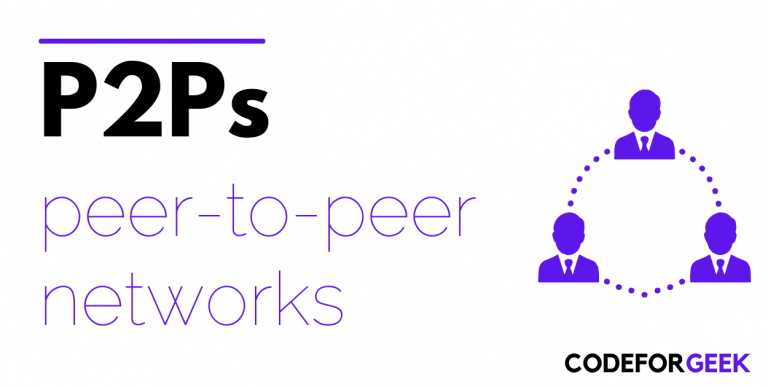In this blog, I am going to walk you through peer-to-peer networks or P2P networks more easily and clearly.
After the emergence of web 2.0, people began exchanging and sharing information, money, memories, and whatnot. The world seems so small today when compared to the times when the internet didn’t exist at all.
Today, sending and receiving data has become simpler and faster. The facilities have seen so many advancements and improvements making people come closer and closer.
However, web2.0 also brought its own set of problems. And one of the major ones was privacy. With a majority of the internet traffic owned by a select few organizations, it was easy for them to intrude the privacy of users.
Moreover, such intrusions have also posed problems for individuals, small, medium, and large business owners. These interfere in the smooth flow of activities.
But in the middle of all this chaos, can you imagine a dedicated environment more like a world where you want to connect or exchange with your peers, friends, family, or anyone, and connect directly, with no one to restrict you. Well, that world is what we call Peer-to-Peer networks or P2P networks.
P2P networks have been proved useful in cases of online P2P payments, P2P loaning, P2P insurance and so much more. Being a success since inception, peer-to-peer networks have use cases dating back to the 90s – that is around three decades now! Unbelievable right!
In this article, I will give you a walkthrough of what are peer-to-peer networks and how they work, so you can have a better understanding of them. So let us get started!
What are Peer-to-Peer Networks?
Peer-to-peer networks are nothing but a group of machines or computers that are connected in a way that they form a network called a peer-to-peer network or a P2P network.
A P2P network can be used to share files, store them, send money, and do many more things. It gives all users, machines or nodes an equal level of control to perform similar tasks.
Here’s an awesome fact. Peer-to-peer networks are called differently and have different definitions with their changing applications and use cases. Blockchain is one such use case of P2Ps. Although it is known to be a unique innovation in technology – it is based on the P2P model, which already existed when blockchain came.
Relying on a distributed network model, P2P networks in the modern day have their major application in exchanging digital assets, cryptocurrencies, and so on. this has allowed buyers and sellers called peers in the network, to be able to buy and sell digital assets like NFTs without the interference of intermediaries.
These networks support the decentralization of activities. Meaning, transactions, exchanges, and other activities in the network are not overlooked or monitored by any centralized authority like governments, or financial institutions like banks, etc.
Peers here are hence free of fees, charges, or tariffs they would otherwise have to pay when using traditional systems of transfers. However, platforms providing these services do charge fees but they are usually quite minimal.
The other key feature of peer-to-peer networks or platforms is that they allow other P2P environments or platforms to connect with peers on the current platform with ease and interfering in the process themselves. All these allow users to enjoy a sense of freedom doing things that were normally controlled.
How do P2P Networks Work?
It is the users that main a distributed peer-to-peer network. The system functions completely without the presence of any control of any central authority or moderator. This in turn means that every node in the network is both a client as well as a server to every other node present on the network.
Each of the nodes on the network store a copy of the recorded transaction or information. A node acting as a server needs to either download files or upload as and when necessary, to other nodes.
In a blockchain P2P network, these nodes are sometimes incentivized by the owners of the network (who do not control the network but create them for users to give them a platform) to verify and validate these transactions and add them cryptographically secure blocks.
Read more about blockchains here.
This is what typically differentiates or classifies peer-to-peer networks from client-server models. In a client-server system, there is always a central entity present who controls the activities in the system.
Moreover, these nodes use hard drives to store data. In cases such as sharing data, helping other peers to process queries to find or download data, nodes make use of some software. Here, peers are themselves the source of any given file.
Conclusion
Today, sending and receiving data has become simpler and faster. These facilities have seen so many advancements and improvements making people come closer and closer.
In this article, I have discussed what peer-to-peer networks are and how they work, so you can have a better understanding of them.





